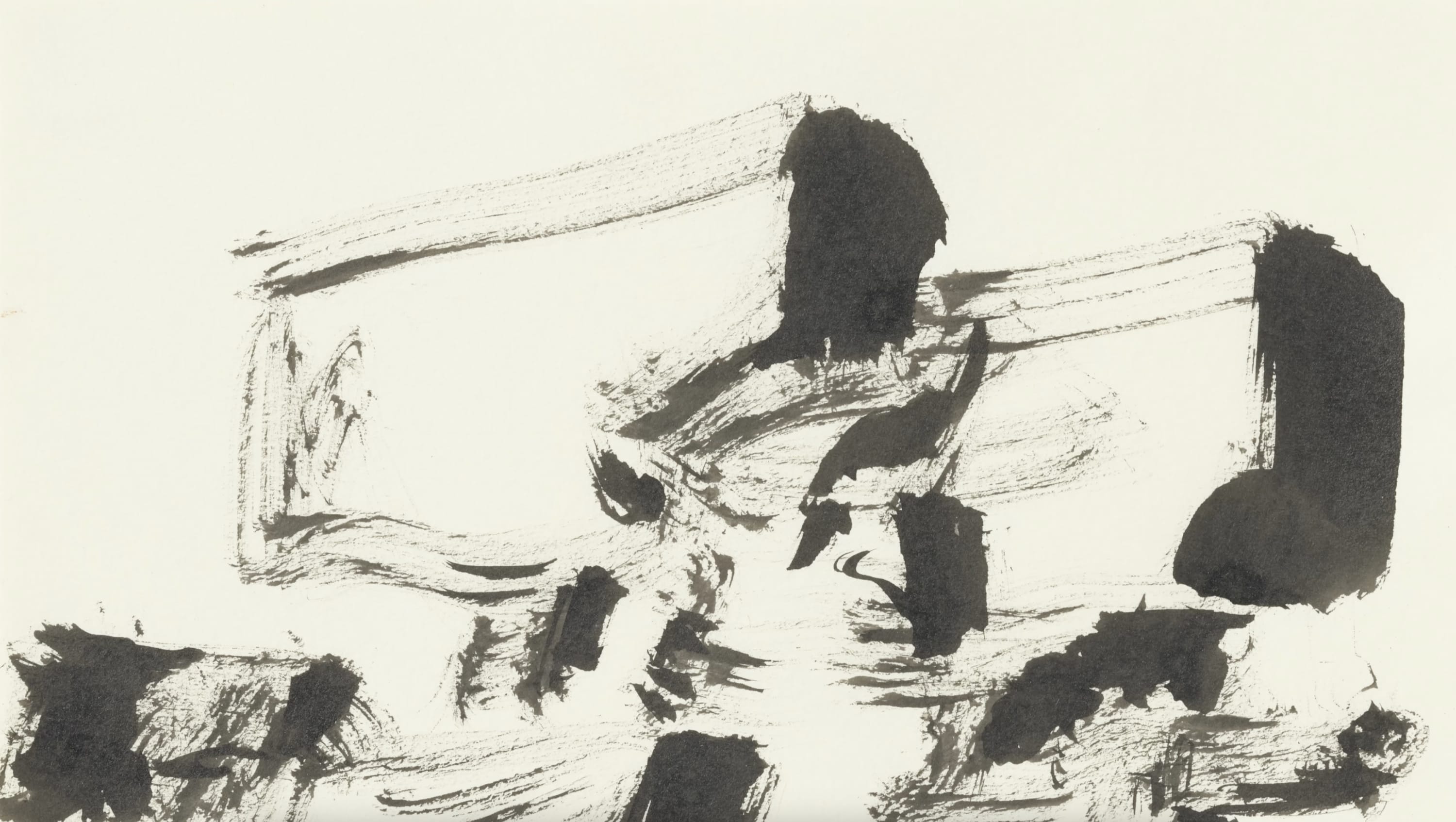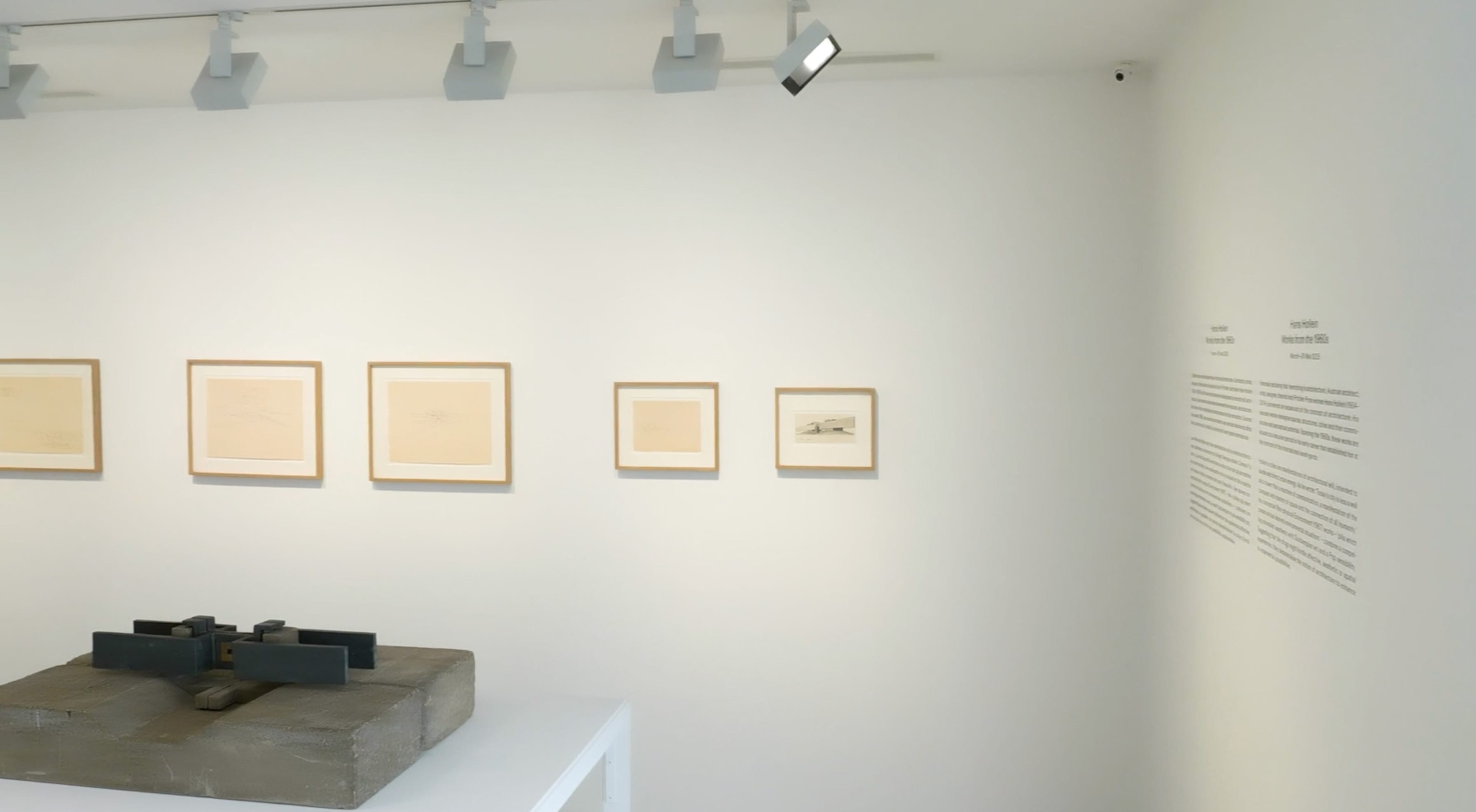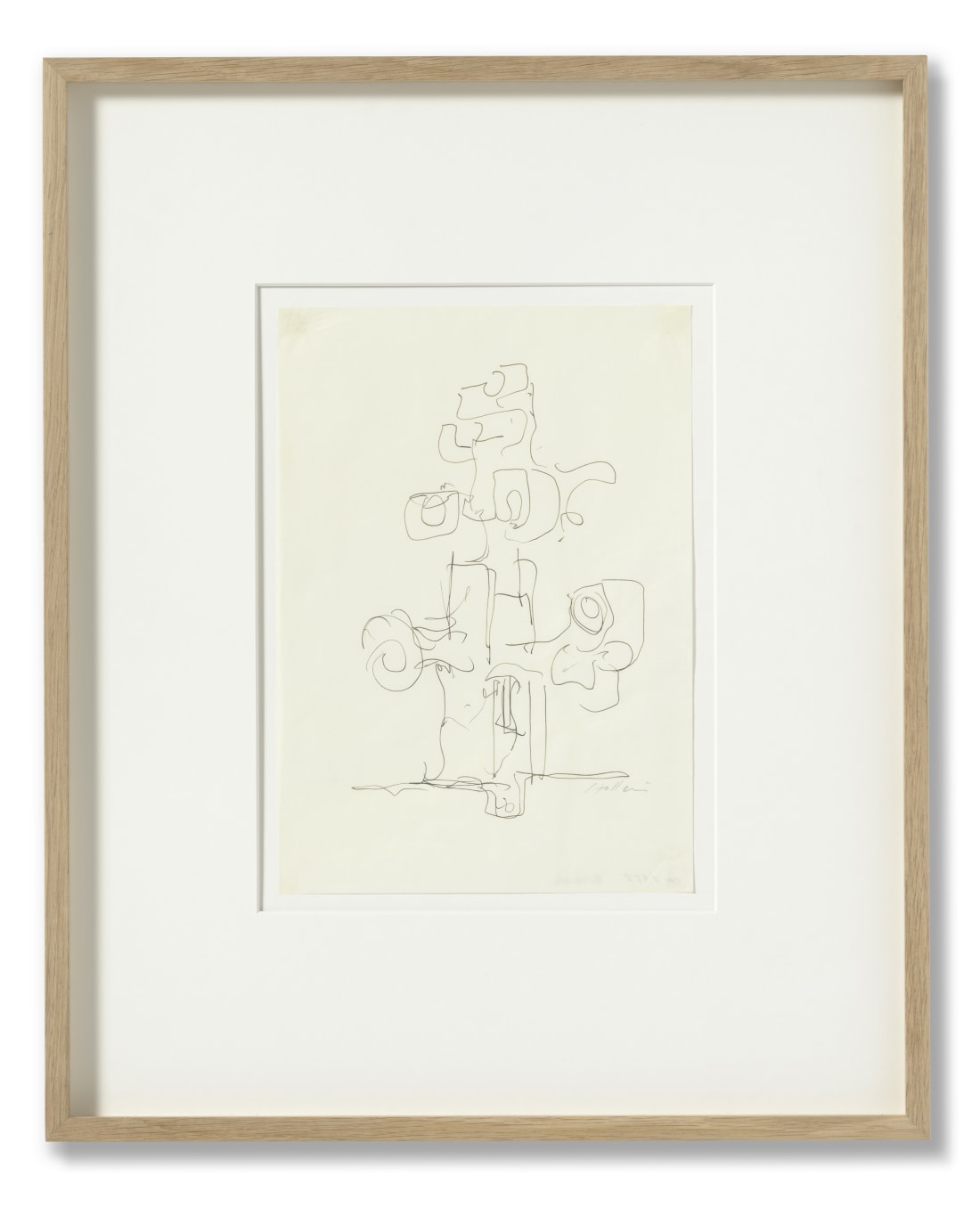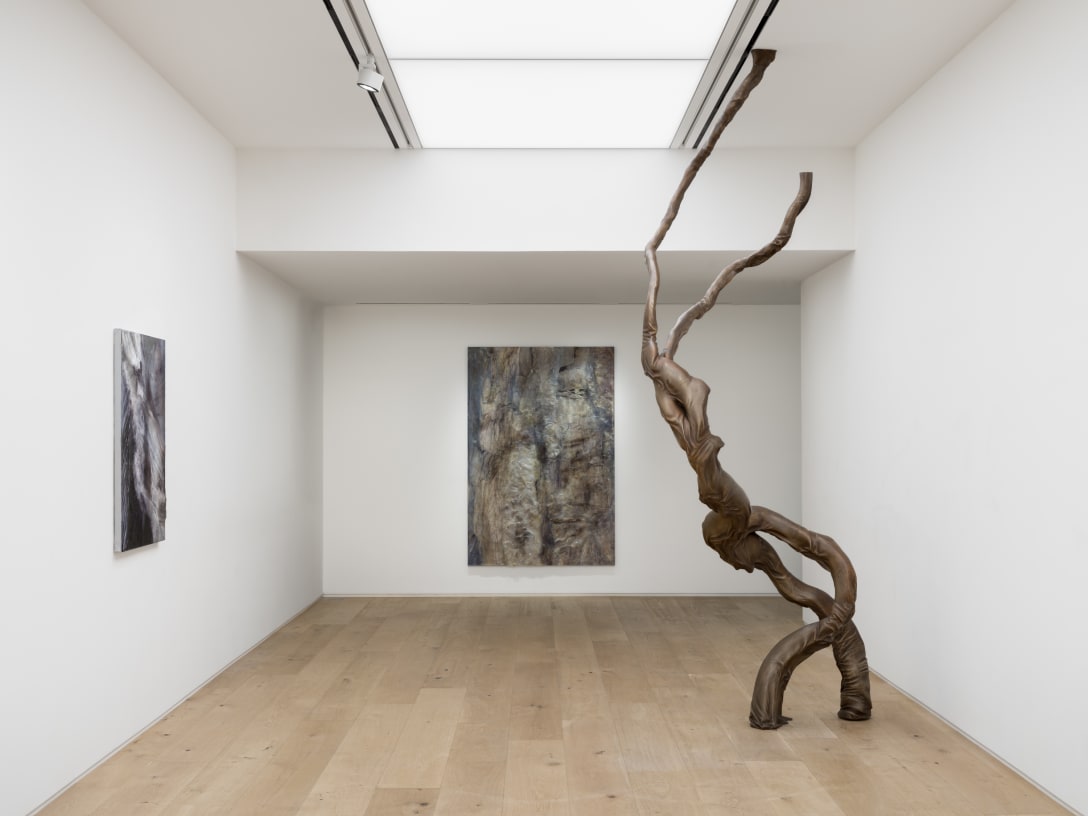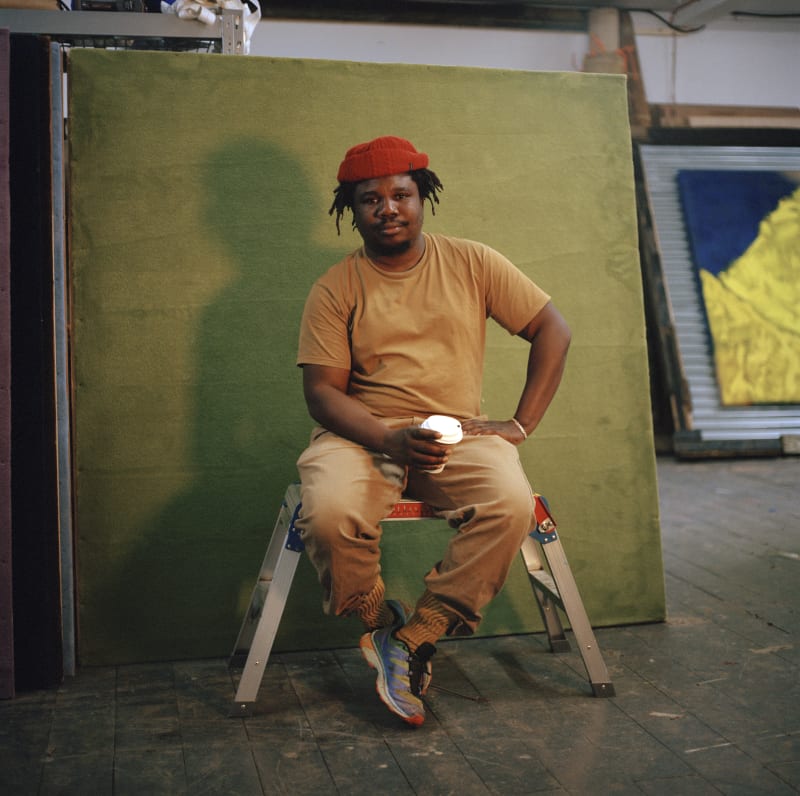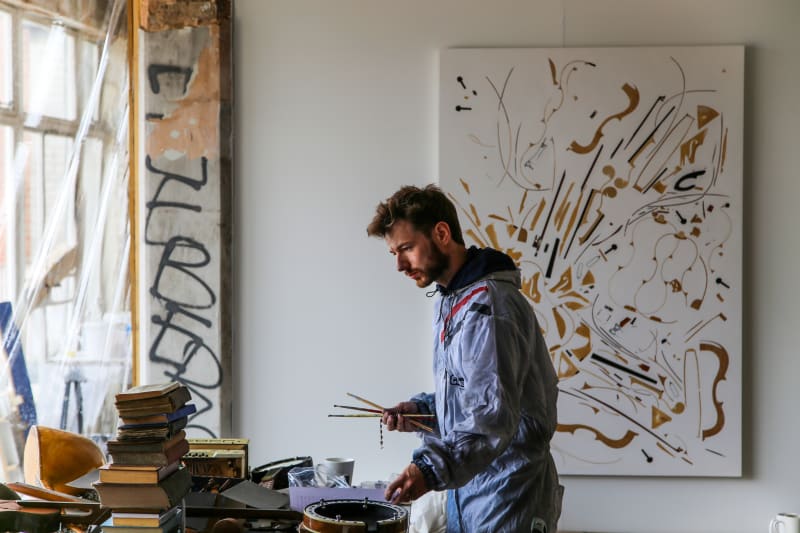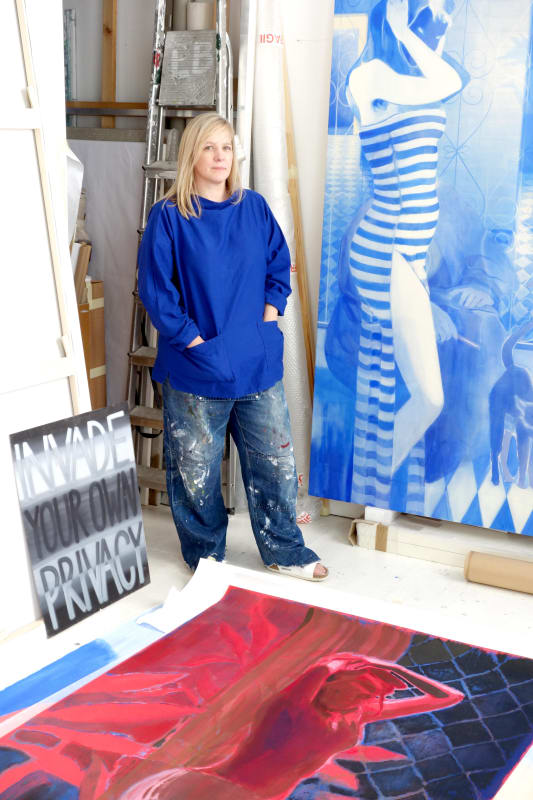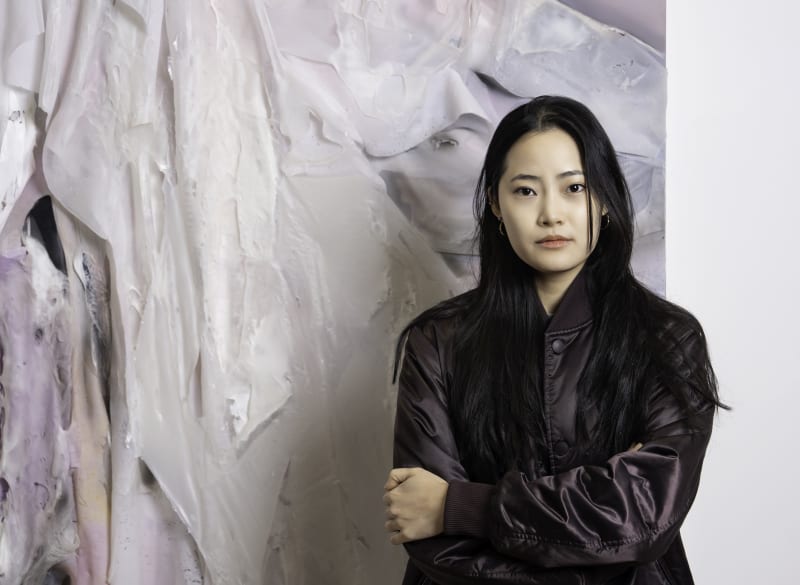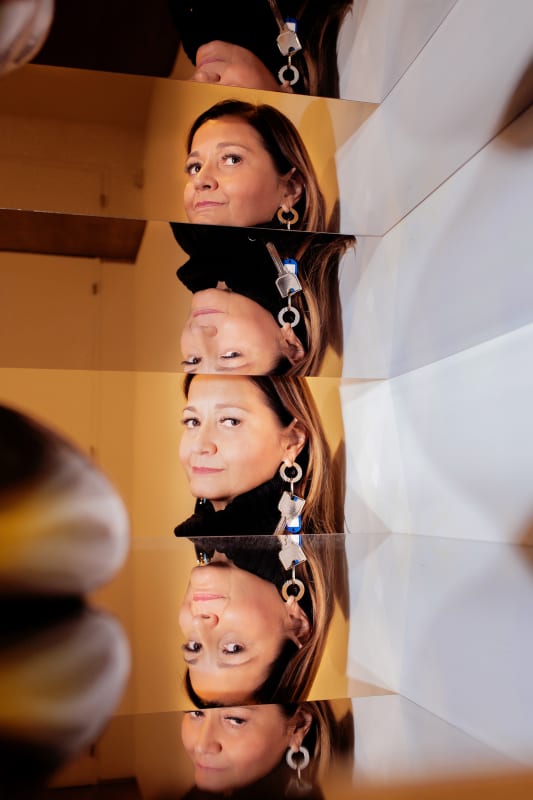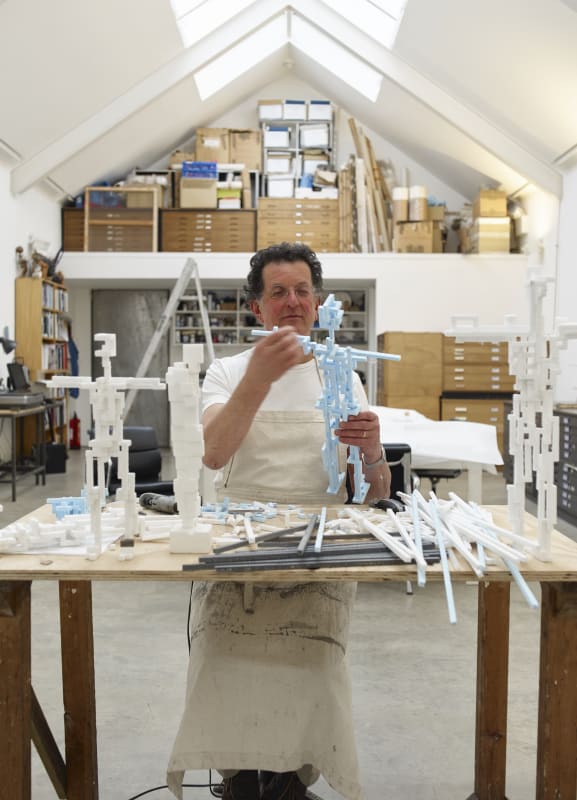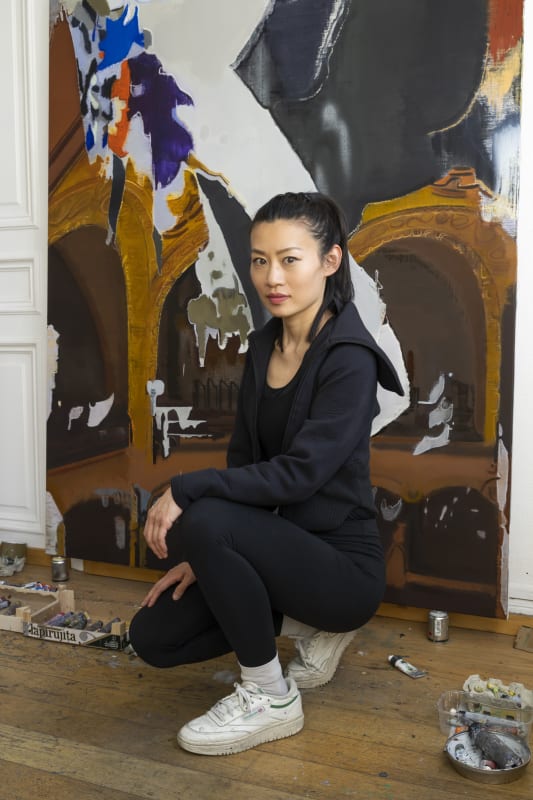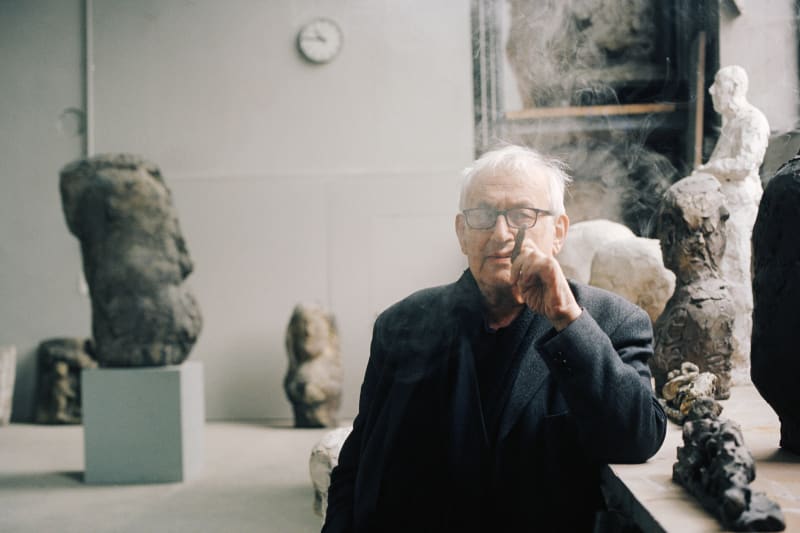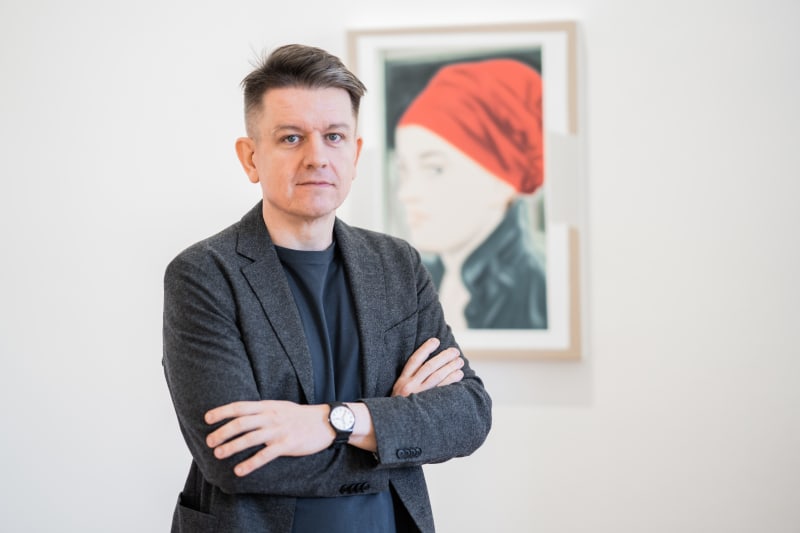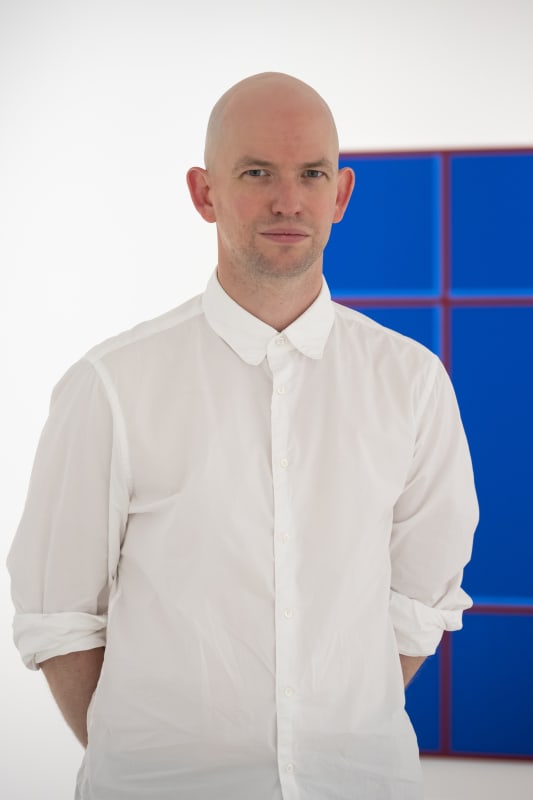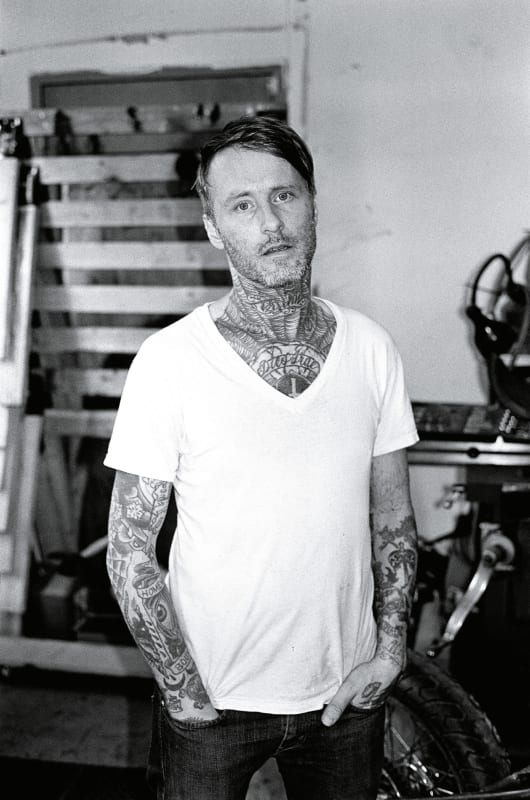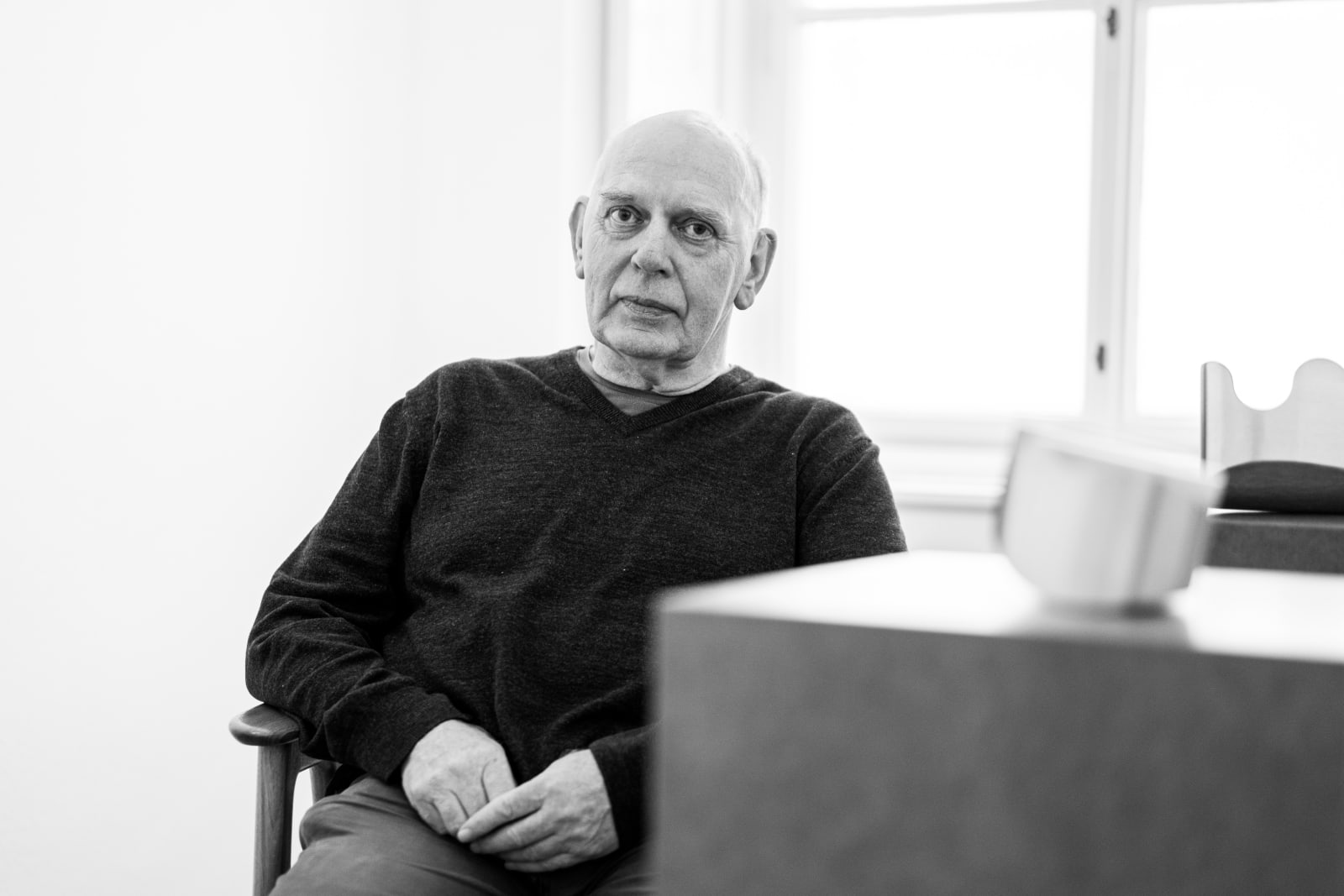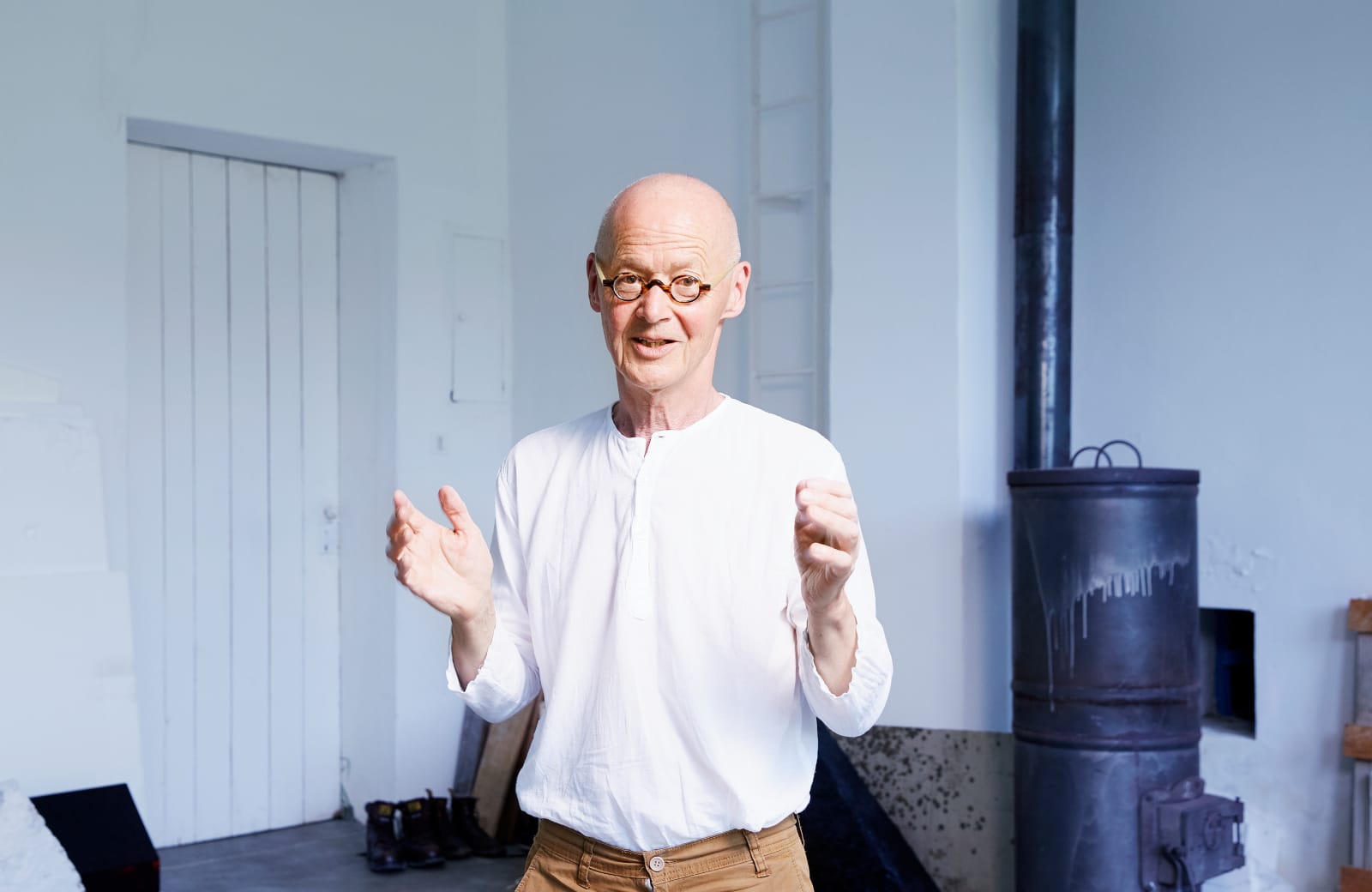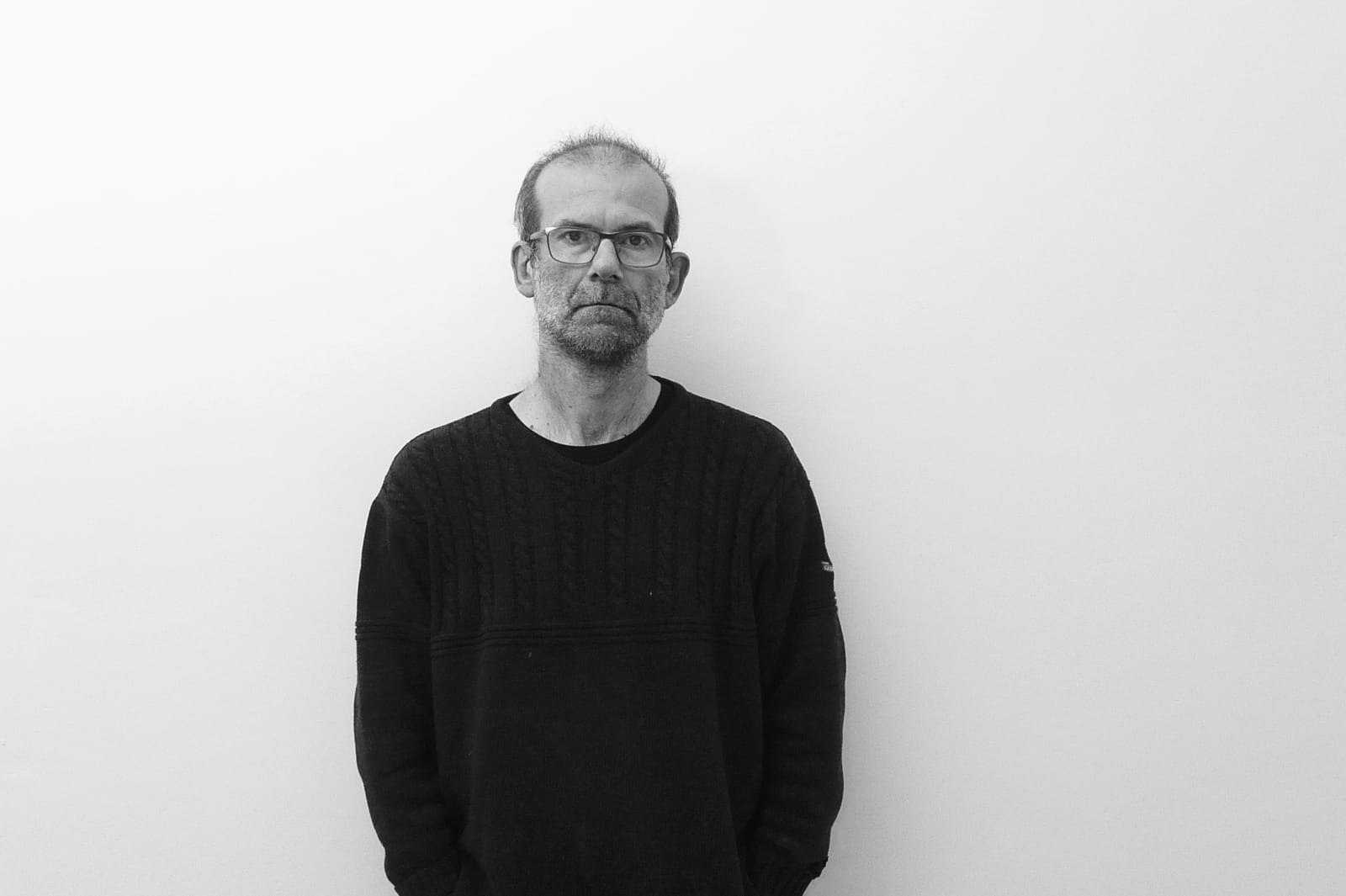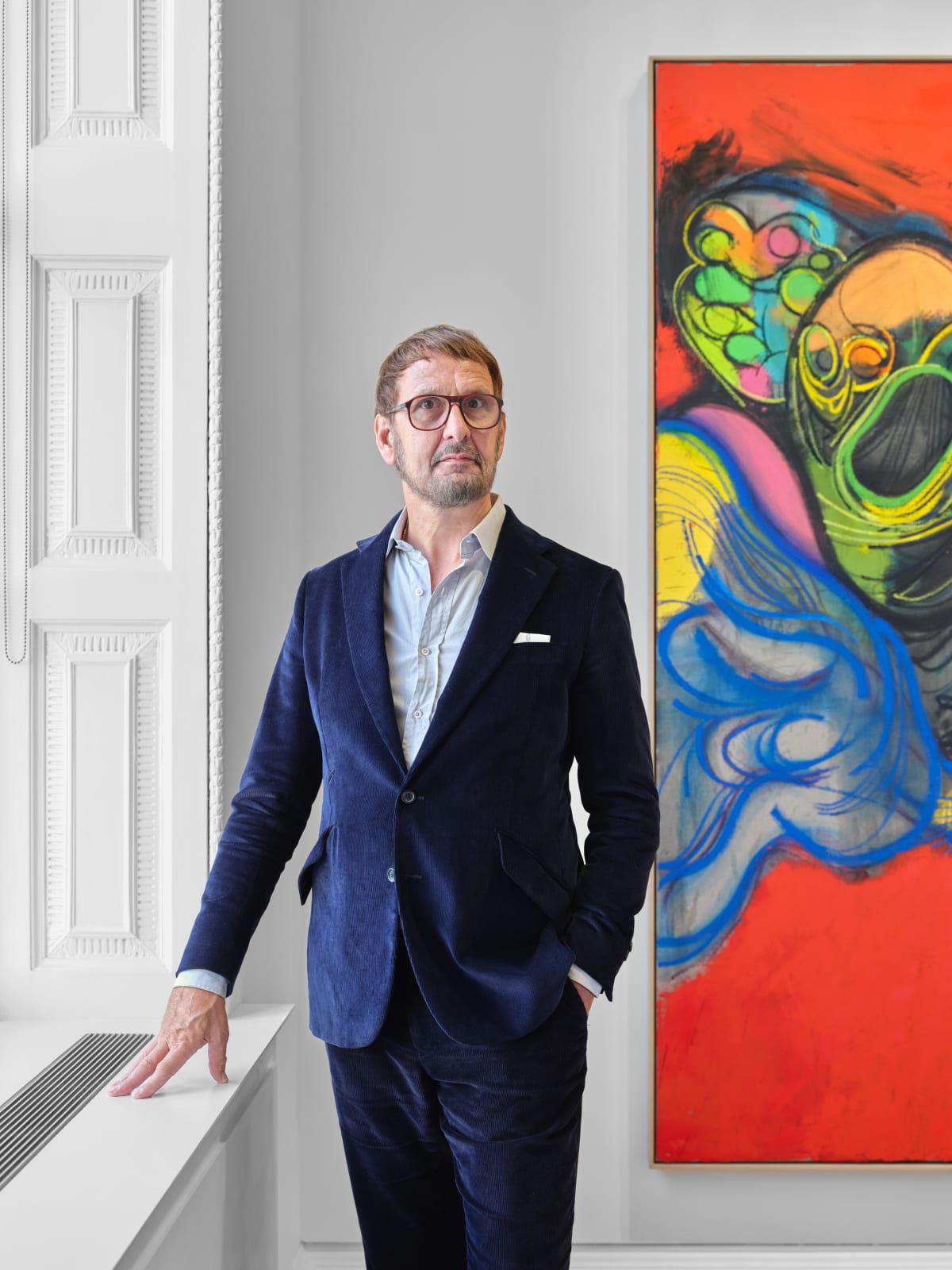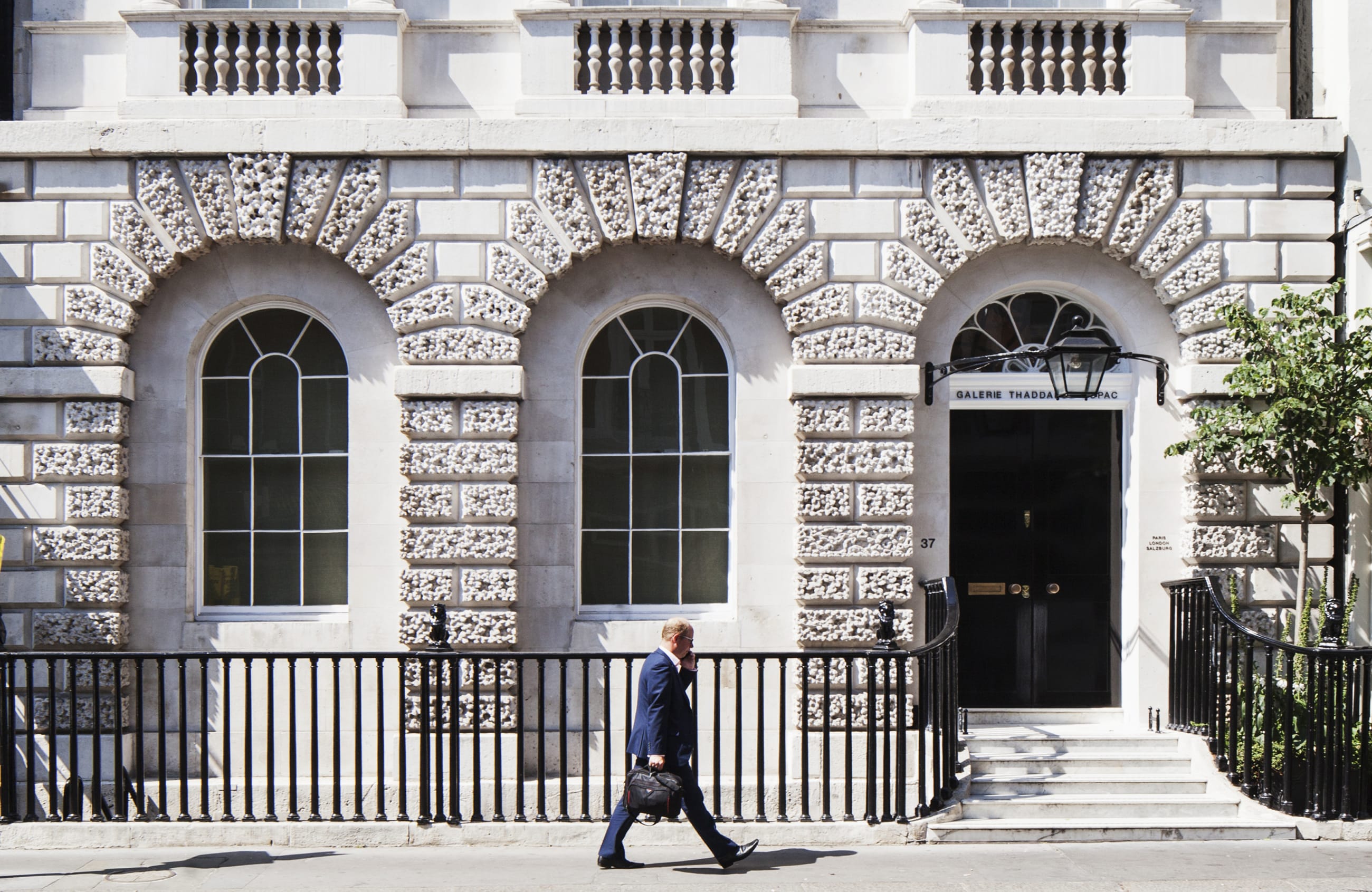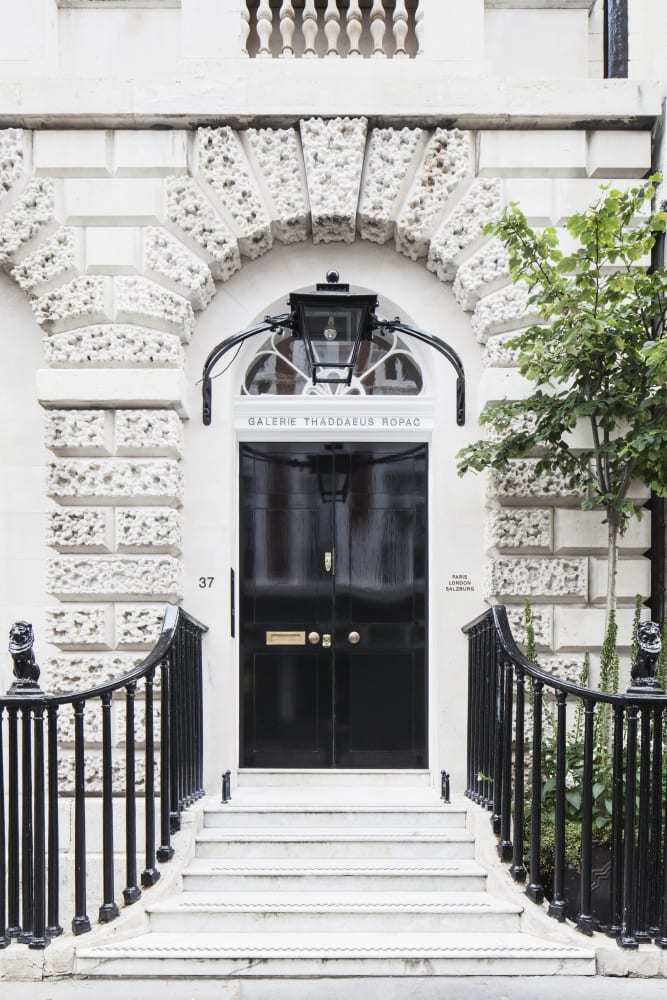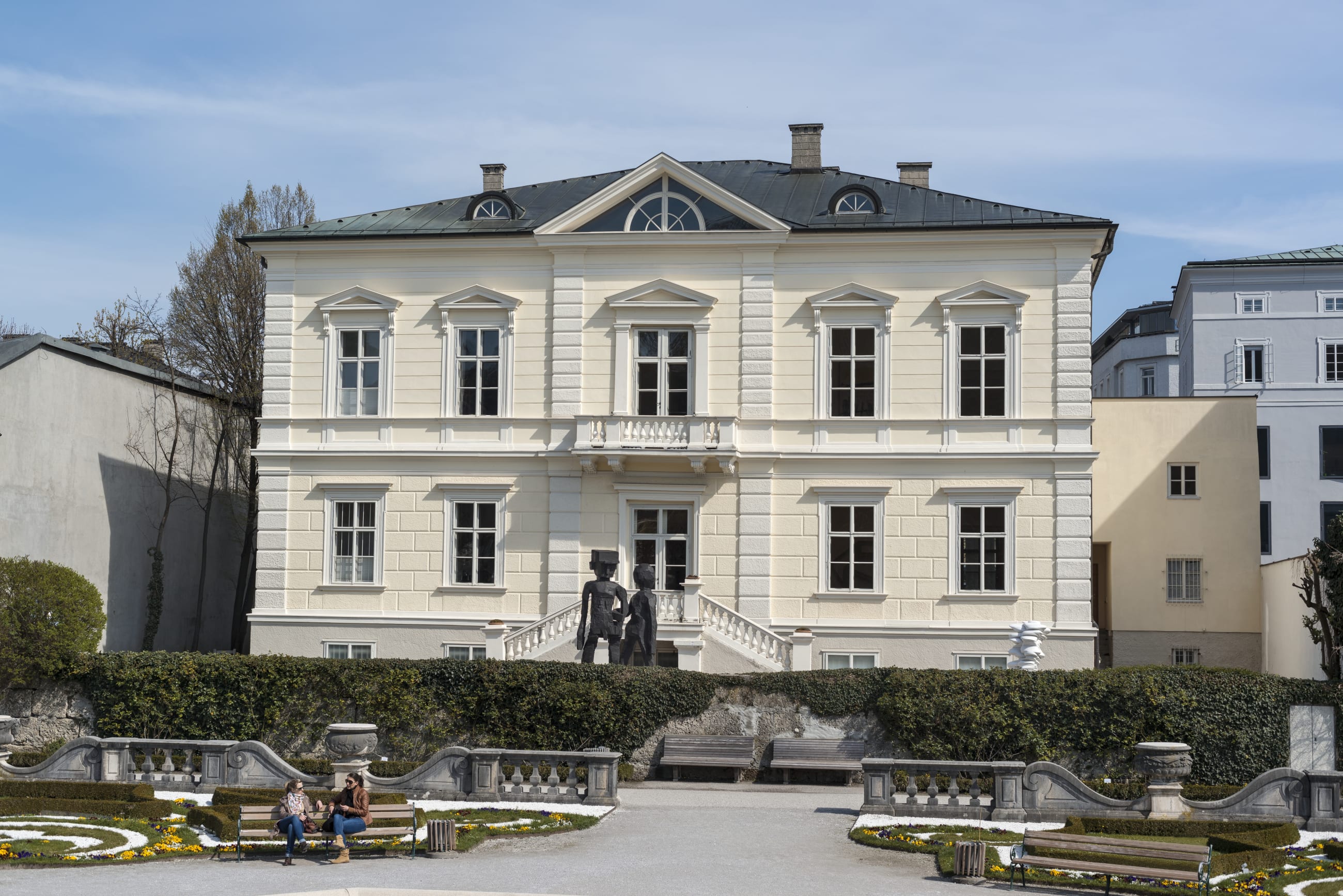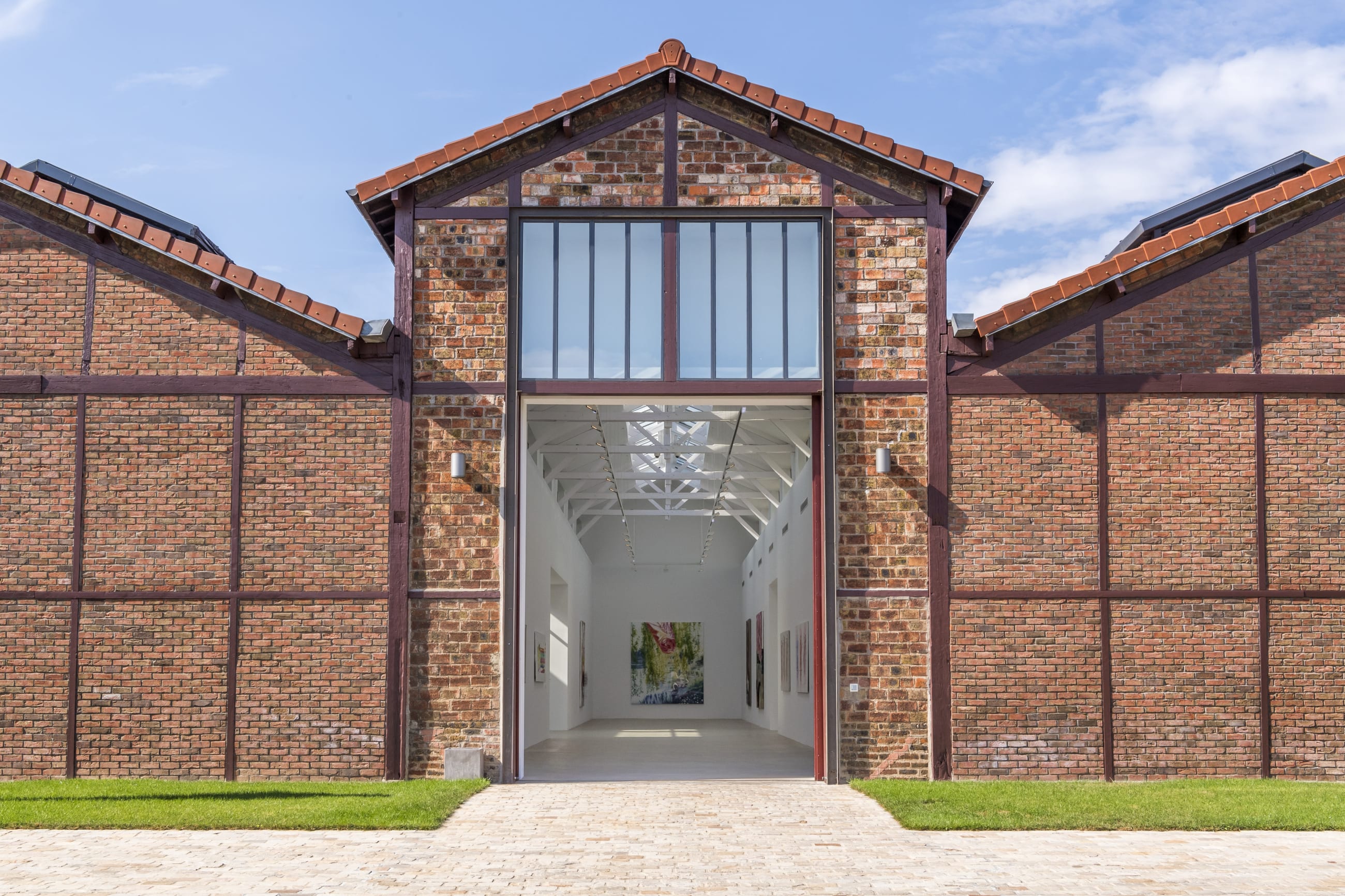This exhibition offers an exceptional insight into Austrian architect, artist, designer, theorist and Pritzker Prize winner Hans Hollein’s eminently artistic practice. Curated by Dorothea Apovnik, it presents a selection of visionary architectural drawings, conceptual works and a sculptural model that reimagine spaces, structures, cities, as well as their communicative and perceptual possibilities. Coinciding with the landmark retrospective Hans Hollein. transFORMS at the Centre Pompidou, Paris, the exhibition spans the 1960s – a decisive period in Hollein’s early career that established him at the forefront of the avant-garde.
Watch a video of Dorothea Apovnik, curator of the exhibition, and the artist’s son, Max Hollein, discussing the exhibition and Hans Hollein’s work in the 1960s.

The 1960s were a pivotal decade in Hans Hollein’s budding career. Studying architecture between Austria and the United States throughout the 1950s, Hollein returned to Vienna in the early 1960s, whereupon he became a key figure of the avant-garde.
Hollein notably collaborated with artist Walter Pichler on a group of revolutionary architectural designs presented at the trailblazing Galerie nächst St. Stephan in Vienna in 1963. Opposing modernist functionalism, Hollein proclaimed the purposelessness of architecture, advocating for a ‘pure, absolute architecture’ in his accompanying manifesto.


This exhibition proved critical, resulting in the acquisition of Hollein’s drawings and models by the Museum of Modern Art, New York. As Prof Eva Branscome writes, Hollein’s ‘‘artistic’ output was already highly collectible before he was known as an architect’ and, by the end of the decade, his works had integrated major public and private collections.
Hans Hollein
The concept of architecture as a spiritual order, the relationship between man, space and nature, the derivation of building from the cultic as well as the fascination for technology, vastness and space travel became Hollein’s themes, his programme and his vision.
— Dorothea Apovnik, curator

At the heart of this exhibition lies Hanging urban structure with traffic junction (1962-1963), a sculptural model that was first exhibited in Hollein’s historic show at Galerie nächst St. Stephan. A futuristic metal city rendered in a vocabulary of intersecting rectilinear forms seems to hover above a concrete plinth, its cantilevered wings jutting out overpoweringly. The work crystallises Hollein’s conception of cities as ‘manifestations of architectural will,’ writes curator Dorothea Apovnik.

Hollein sketched various versions of urban constructions that he called Communication Interchange. His drawings of imbricated structures resemble blown-up assemblages of machine components that verge on the totemic. An avid technophile, Hollein was fascinated by the ever-increasing scale and complexity of machines, which he sought to transform into architecture.

Hollein’s technomorphic edifices shed light on his experimentation with form, as well as his underpinning conceptualisation of architecture as a fundamental ‘medium of communication’ through which human beings expand themselves not only physically but also psychically.
Today’s city is less a wall and tower than a machine of communication, a manifestation of the conquest and mastery of space and the connection of all humanity.
— Hans Hollein

Hollein perceived drawing not only as an architectural tool but also as an artefact in itself. In numerous works on show, the line between art and architecture dissolves almost entirely. In one drawing, Hollein’s thick, inky brushwork oscillates between calligraphic art, abstract mark-making and an impression of the titular building.

My father didn’t make any distinction between an architect and an artist. He kind of was everything in one, or he felt that architecture is, of course, also an artistic discipline. That, I think, is really captured in his drawings in a profound way. This can go to the very abstract and almost metaphysical.
— Max Hollein, son of Hans Hollein

Hollein’s Non-physical Environment – Architektur aus der Pille (1967) works encapsulate the pioneeringly conceptual nature of his practice. Asserting that ‘architects have to stop thinking in terms of building,’ he strove to dematerialise the very notion of architecture in order to enhance its perceptual possibilities. Hollein thus harnessed the power of psychoactive drugs to foster artificial spatialities through ‘different pills which create various desired environmental situations’.
I invented the “architecture pill”. At that time, pharmaceuticals were developed which overcome claustrophobia or agoraphobia, which allowed rooms to appear less threatening by enlarging or reducing them perceptually. I imagined that one might even be able to produce images of architecture with pills, and I exhibited pills that I named, for example, “Hagia Sophia”, “Sydney Opera” or “Stonehenge”.
— Hans Hollein

In one work, ‘Liebe ohne Furcht’ (‘Love without fear’) is typewritten beneath a pill affixed to the paper support, while in another, a list of masterpieces including Picasso’s Les Demoiselles d’Avignon (1907) is inscribed beside a dotted line of red pills, suggesting that the drugs might kindle an affective or aesthetic experience. In yet another, a white pill is simply emblazoned with the word ‘KING.’

As Prof Branscome posits, Hollein saw the drug as ‘the ultimate environment in the creation of an architecture of oblivion, dream and contentment.’ Combining a compelling minimalist aesthetic with Duchampian wit and a Pop sensibility (a tiny pill even refers to ‘Wiener schnitzel with potatoes and mixed salad’), Hollein’s prescient conceptual artworks redefined architecture as fundamentally experiential.
This exhibition provides an intimate look into Hans Hollein’s pivotal early works, which highlight the multifaceted nature of his practice. ‘He is the only architect whose works are kept in the art collections of both the Museum of Modern Art in New York and the Centre Pompidou in Paris, and the only artist to have won the Pritzker,’ states Prof Liane Lefaivre. ‘He shifts nimbly from one identity to another. There is nothing arbitrary about this multiplicity.’ Across a diverse body of works, the exhibition reveals the extraordinary breadth of Hollein’s artistic practice, as well as his underpinning radical architectural vision.
